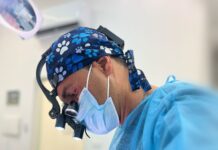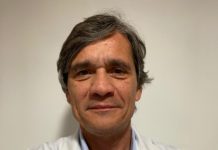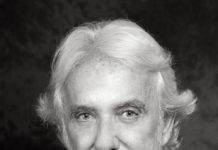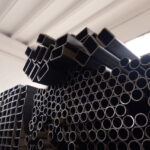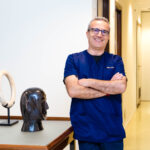Dental implantology is a branch of dentistry that aims to restore missing teeth by inserting artificial titanium roots (dental implants). In essence, implantology is a rehabilitation procedure aimed at those who have lost their natural teeth. Illustrating the latest frontiers in the field are Dr Maria Cacciola, Dr Luigi Vittozzi and Dr Domenico Cacciola of the prestigious Cacciola Dental Centre.
by Roberta Imbimbo
Dr Cacciola, what does dental implantology consist of?
Dental implantology consists of placing a titanium dental implant integrated into the bone of the dental arch concerned (osseointegrated implantology).
The result is a stable bond between the bone and the dental implant that can withstand high chewing loads. Artificial teeth are designed to replace real teeth that are missing in both aesthetics and chewing function. Usually, the integration time of the implant varies depending on the bone involved: maxillary (4-6 months); mandibular (3-4 months).
The healing time is estimated by the implantologist, also taking into account factors that could slow down osseointegration.
What is immediate loading implantology?
Immediate loading implantology means fitting a prosthesis on the implant immediately. This method is particularly suitable for all those who wish, especially for aesthetic reasons, to regain their smile immediately after the placement of an implant. It is used in the case of mono-edentulias; small fixed rehabilitations on implants in aesthetic and/or posterior regions; total edentulias. Depending on the extent of the surgery and the type of patient, it may be decided to ‘time’ immediate loading over days, weeks or months.

Dr Vittozzi, how has this method evolved over time?
The first protocols for immediate loading in implantology, now dating back several decades, stipulated that a dental implant should remain submerged (inside the gum) for 3-6 months, in order to avoid any trauma in the healing phase. Subsequently, however, numerous scientific studies observed that the osseointegration process could take place normally even if the implant ‘protruded’ from the gum, as long as specific mechanical and biological criteria were met. Since then, protocols have increasingly aimed at reducing the time required for surgery and implant prosthetics. Immediate load dental implantology represents the ultimate reduction in implant surgery time. This is because it envisages that the implant insertion and chewing of the implant prosthesis take place within 24 hours of surgery. Immediate loading implantation therefore represents a major breakthrough in the field, especially considering that today’s patients increasingly desire fixed prostheses and the placement of immediate dentures immediately after oral surgery.
What are the success factors for the procedure?
The main factor for the success of immediate loading implantology is implant stability in the bone. Stability is not a predictable parameter, but is strongly related to mechanical (surgical technique, implant geometry, quality and quantity of available bone) and biological (osseointegration) factors. The accurate pre-operative radiographic study and the detailed evaluation of the patient’s initial clinical state allow a fairly precise idea of how to achieve maximum immediate implant stability. In our practice, orthopantomography, 3D CT scans and digital impressions can be carried out on site for an immediate assessment of the clinical case and planning of the procedure with dedicated software.
What advantages does an immediate loading implant offer?
The possibility of making an immediately loaded prosthesis represents a great advantage for patients from a psychological and functional point of view. However, these undeniable advantages require first of all careful patient selection. It is necessary, for example, to assess the general state of health; smoking habits; any local infections or inflammations; the presence of bruxism or other parafunctions. A growing number of scientific studies also show that the long-term survival of this type of rehabilitation is completely superimposable to the survival rate of similar rehabilitations on implants placed according to traditional protocols. In general, the placement of immediately loaded dental implants is a safe procedure with an average success rate of 96%.
Dr Domenico Cacciola, how is it possible to maintain hygiene on this type of prosthesis?
This type of implant-prosthesis may pose some obstacles to professional oral hygiene manoeuvres, mainly deriving from the morphology of the ‘orthopaedic’ component of the prostheses themselves, meaning by this term the prosthetic portion deputed to represent the missing portion of gum tissue lost as a result of bone atrophy and necessary in its representation in order to be able to provide the patient with prosthetic dental elements of a congruous size and not oversized. the integration of a daily and effective use of specific home oral hygiene instruments, together with the individualised protocol of professional follow-up, is the approach that can allow in the medium and long term the integrity of the implant-prosthetic rehabilitation and the tissues that support it, thus offering the patient a guarantee of survival of the rehabilitation.








